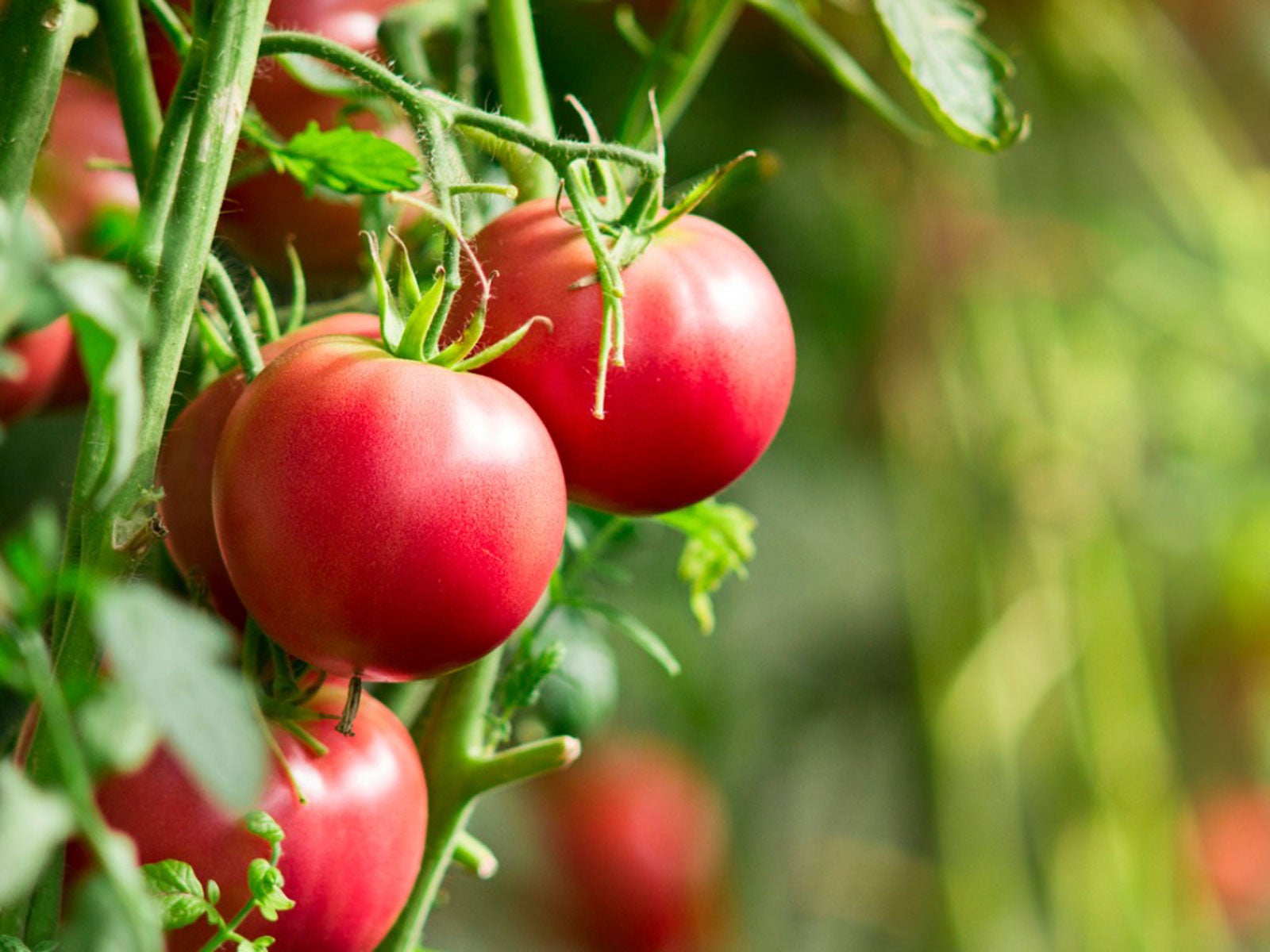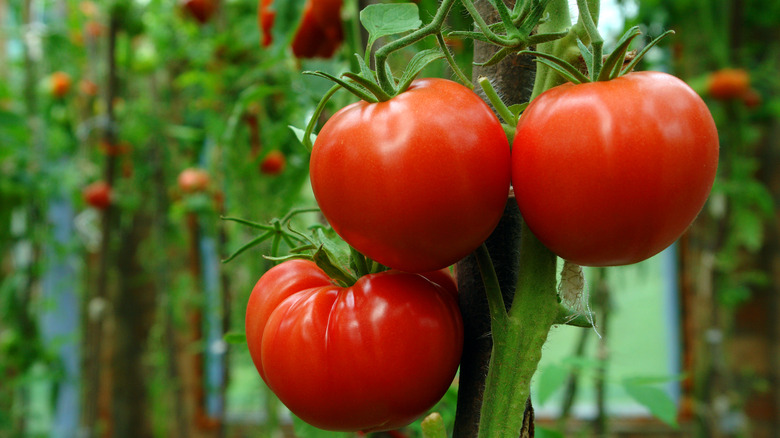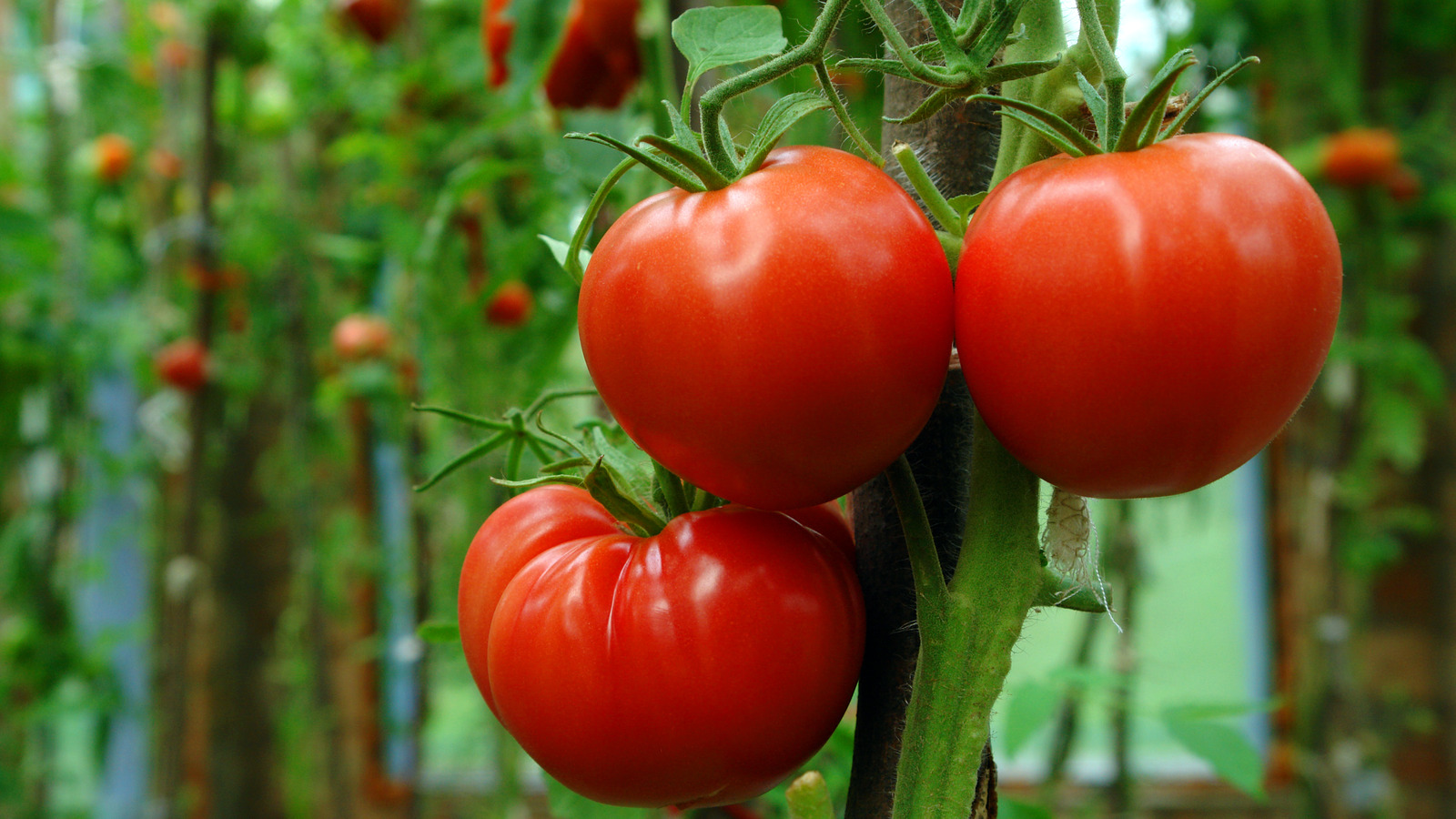Choosing the Right Varieties for New England’s Climate
Growing tomatoes in New England can be a challenging but rewarding experience. The region’s cool and unpredictable climate requires careful selection of tomato varieties that are resistant to disease and can thrive in the local conditions. When searching for the best tomatoes to grow in New England, gardeners should look for varieties that are bred specifically for the region’s unique climate.
New England’s cool summers and short growing season make it essential to choose tomato varieties that mature quickly and are resistant to disease. Look for varieties that are labeled as “early” or “mid-season” and have a maturity date of around 60-70 days. These varieties will have the best chance of producing a bountiful harvest before the first frost.
Some popular tomato varieties that are well-suited for New England’s climate include ‘Early Girl’, ‘Patio’, and ‘Tiny Tim’. These varieties are compact, produce fruit quickly, and are resistant to disease. They are also great choices for container gardens or small spaces.
In addition to choosing the right variety, gardeners should also consider the specific growing conditions in their area. New England’s climate can vary significantly from north to south, with the northern regions experiencing cooler temperatures and shorter growing seasons. Gardeners in these areas may need to choose varieties that are even more cold-tolerant and mature quickly.
By selecting the right tomato variety for New England’s climate, gardeners can enjoy a bountiful harvest of delicious and healthy tomatoes. Whether you’re a seasoned gardener or just starting out, choosing the right variety is the key to success.
Understanding the Different Types of Tomatoes: Determinate, Indeterminate, and Semi-Determinate
When it comes to growing tomatoes in New England, understanding the different types of tomatoes is crucial for success. Tomatoes can be broadly classified into three categories: determinate, indeterminate, and semi-determinate. Each type has its unique characteristics, growth habits, and fruiting patterns, making it essential to choose the right type for your specific needs and growing conditions.
Determinate tomatoes, also known as “bush” tomatoes, are compact and grow to a certain height before stopping. They produce fruit all at once and are often used for canning and sauces. Determinate tomatoes are well-suited for small gardens, containers, and cold frames, making them an excellent choice for New England gardeners.
Indeterminate tomatoes, on the other hand, are vining and will continue to grow and produce fruit throughout the season. They require support, such as tomato cages or trellises, to keep them upright and promote healthy growth. Indeterminate tomatoes are ideal for larger gardens and are often preferred by gardeners who want a continuous harvest.
Semi-determinate tomatoes are a hybrid of determinate and indeterminate tomatoes. They grow to a certain height, but will continue to produce fruit throughout the season. Semi-determinate tomatoes offer the best of both worlds, providing a compact growth habit and a continuous harvest.
When choosing the best tomatoes to grow in New England, consider the specific growing conditions and the type of tomato that will thrive in those conditions. Determinate tomatoes are an excellent choice for gardeners who want a compact growth habit and a single harvest, while indeterminate tomatoes are ideal for gardeners who want a continuous harvest and are willing to provide support.
By understanding the different types of tomatoes and their unique characteristics, New England gardeners can make informed decisions and choose the best tomatoes for their specific needs and growing conditions.
Top Picks for New England Gardeners: Heirloom and Hybrid Tomatoes
When it comes to choosing the best tomatoes to grow in New England, there are many excellent options to consider. Heirloom and hybrid tomatoes are popular choices among gardeners, offering a range of flavors, textures, and growth habits. Here are some top picks for New England gardeners:
‘Brandywine’ is a popular heirloom variety that is well-suited for New England’s climate. This variety produces large, pink fruits with a rich, tangy flavor. ‘Brandywine’ is an indeterminate variety, requiring support as it grows.
‘Cherokee Purple’ is another popular heirloom variety that thrives in New England’s climate. This variety produces deep purple fruits with a smoky, slightly sweet flavor. ‘Cherokee Purple’ is also an indeterminate variety, requiring support as it grows.
‘Early Girl’ is a hybrid variety that is specifically bred for cooler climates like New England. This variety produces medium-sized fruits with a bright red color and a sweet, tangy flavor. ‘Early Girl’ is a determinate variety, growing to a compact height and producing fruit all at once.
‘Patio’ is a hybrid variety that is perfect for small gardens and containers. This variety produces small, red fruits with a sweet flavor and a compact growth habit. ‘Patio’ is a determinate variety, growing to a height of around 2-3 feet.
These are just a few examples of the many excellent tomato varieties available to New England gardeners. By choosing the right variety for your specific needs and growing conditions, you can enjoy a bountiful harvest of delicious and healthy tomatoes.
When selecting tomato varieties, consider factors such as growth habit, fruit size and color, and disease resistance. Heirloom varieties like ‘Brandywine’ and ‘Cherokee Purple’ offer unique flavors and textures, while hybrid varieties like ‘Early Girl’ and ‘Patio’ provide disease resistance and compact growth habits.
How to Grow Tomatoes in New England: Tips for Success
Growing tomatoes in New England requires careful attention to detail and a understanding of the region’s unique climate. To ensure a successful harvest, follow these tips for growing tomatoes in New England:
Soil Preparation: Tomatoes require well-draining, fertile soil to grow. Test your soil to determine its pH level and nutrient content. Add organic matter such as compost or manure to improve soil fertility and drainage.
Sunlight Requirements: Tomatoes need full sun to produce a bountiful harvest. Choose a location that receives at least 6 hours of direct sunlight per day.
Watering: Tomatoes require consistent moisture, especially when fruiting. Water plants deeply once or twice a week, depending on weather conditions. Avoid overwatering, which can lead to disease and root rot.
Fertilization: Feed your tomato plants with a balanced fertilizer once a month. You can also side-dress with a high-phosphorus fertilizer to promote fruiting.
Support: Indeterminate tomato varieties require support as they grow. Use tomato cages, trellises, or stakes to keep plants upright and promote healthy growth.
Row Covers: Row covers can help extend the growing season in New England by protecting plants from frost and cold temperatures. Apply row covers in early spring and remove them when the weather warms up.
By following these tips, you can grow delicious and healthy tomatoes in New England. Remember to choose varieties that are resistant to disease and can thrive in the region’s cool and unpredictable climate.
In addition to these tips, consider using integrated pest management techniques to control pests and diseases. This includes using physical barriers, crop rotation, and biological controls to minimize the use of chemical pesticides.
With proper care and attention, you can enjoy a bountiful harvest of delicious tomatoes in New England. Whether you’re a seasoned gardener or just starting out, growing tomatoes can be a rewarding and enjoyable experience.
Common Challenges and Solutions for Growing Tomatoes in New England
Growing tomatoes in New England can be challenging due to the region’s cool and unpredictable climate. Here are some common challenges that New England gardeners may face when growing tomatoes, along with solutions and strategies for overcoming them:
Late Blight: Late blight is a fungal disease that can cause significant damage to tomato plants. To prevent late blight, use disease-resistant varieties, remove infected plants, and apply fungicides as needed.
Early Frost: Early frost can damage or kill tomato plants. To protect plants from frost, use row covers or bring plants under cover when frost is predicted.
Pests: Pests such as hornworms, aphids, and whiteflies can damage tomato plants. To control pests, use integrated pest management techniques such as physical barriers, crop rotation, and biological controls.
Disease-Resistant Varieties: Using disease-resistant varieties can help prevent the spread of disease in tomato plants. Look for varieties that are resistant to common tomato diseases such as late blight and early blight.
Integrated Pest Management: Integrated pest management (IPM) is a holistic approach to managing pests and diseases in tomato plants. IPM involves using a combination of techniques such as physical barriers, crop rotation, and biological controls to minimize the use of chemical pesticides.
By understanding the common challenges of growing tomatoes in New England and using the solutions and strategies outlined above, gardeners can overcome these challenges and enjoy a successful harvest.
In addition to these solutions, consider using organic gardening practices such as composting and mulching to promote healthy soil and reduce the risk of disease and pests.
By taking a proactive approach to managing pests and diseases, New England gardeners can enjoy a bountiful harvest of delicious and healthy tomatoes.
Extending the Harvest: How to Grow Tomatoes in Containers and Cold Frames
Growing tomatoes in containers and cold frames can help extend the harvest season in New England. This method allows gardeners to start growing tomatoes earlier in the season and continue harvesting later in the fall.
Container Gardening: Growing tomatoes in containers is a great way to extend the harvest season. Choose a container that is at least 5-gallons in size and has good drainage. Use a well-draining potting mix and a balanced fertilizer. Tomatoes grown in containers will require more frequent watering and fertilization than those grown in the ground.
Cold Frames: Cold frames are a type of unheated greenhouse that can be used to extend the harvest season. They are typically made of wood or metal and have a transparent top that allows sunlight to enter. Cold frames can be used to start tomatoes earlier in the season and continue harvesting later in the fall.
Choosing the Right Variety: When growing tomatoes in containers or cold frames, it’s essential to choose a variety that is compact or dwarf. These varieties are specifically bred for container gardening and will produce fruit in a smaller space.
Providing Support: Tomatoes grown in containers or cold frames will require support as they grow. Use tomato cages or trellises to provide support and keep the plants upright.
Caring for Tomatoes in Containers and Cold Frames: Tomatoes grown in containers and cold frames will require more frequent watering and fertilization than those grown in the ground. Make sure to check the soil moisture daily and fertilize regularly.
By growing tomatoes in containers and cold frames, New England gardeners can enjoy a longer harvest season and more delicious homegrown tomatoes.
This method is perfect for gardeners who want to extend the harvest season and enjoy fresh tomatoes throughout the year. With the right variety and proper care, gardeners can enjoy a bountiful harvest of delicious tomatoes.
Preserving the Harvest: Canning, Freezing, and Dehydrating Tomatoes
Preserving the tomato harvest is a great way to enjoy the fruits of your labor throughout the year. Here are some methods for preserving tomatoes, including canning, freezing, and dehydrating:
Canning: Canning is a popular method for preserving tomatoes. It involves packing tomatoes into jars and heating them to kill off any bacteria. Canned tomatoes can be used in a variety of dishes, including sauces, soups, and stews.
Freezing: Freezing is another method for preserving tomatoes. It involves blanching the tomatoes in boiling water and then freezing them. Frozen tomatoes can be used in soups, stews, and sauces.
Dehydrating: Dehydrating is a method for preserving tomatoes that involves removing the water content from the tomatoes. Dehydrated tomatoes can be used in a variety of dishes, including soups, stews, and sauces.
Recipes: Here are some recipes for preserving tomatoes:
Tomato Sauce: This recipe involves cooking down fresh tomatoes with onions, garlic, and herbs to create a delicious sauce. The sauce can be canned or frozen for later use.
Tomato Soup: This recipe involves cooking down fresh tomatoes with vegetables and broth to create a delicious soup. The soup can be canned or frozen for later use.
Dehydrated Tomato Powder: This recipe involves dehydrating fresh tomatoes and then grinding them into a powder. The powder can be used as a seasoning in a variety of dishes.
By preserving the tomato harvest, New England gardeners can enjoy the fruits of their labor throughout the year. Whether you choose to can, freeze, or dehydrate your tomatoes, there are many methods for preserving the harvest and enjoying delicious homegrown tomatoes.
Preserving the tomato harvest is a great way to enjoy the rewards of homegrown tomatoes and to experiment with new recipes and techniques.
Conclusion: Growing Delicious Tomatoes in New England
Growing tomatoes in New England can be a rewarding and delicious experience. By choosing the right varieties, providing proper care, and overcoming common challenges, gardeners can enjoy a bountiful harvest of fresh, flavorful tomatoes.
Whether you’re a seasoned gardener or just starting out, growing tomatoes in New England can be a fun and rewarding experience. With the right techniques and strategies, you can enjoy a successful harvest and savor the flavor of fresh, homegrown tomatoes.
Remember to choose varieties that are resistant to disease and can thrive in New England’s cool and unpredictable climate. Provide proper care, including soil preparation, sunlight, watering, and fertilization. Use row covers to extend the growing season and protect your plants from frost.
Don’t be afraid to experiment with new varieties and techniques. Try growing tomatoes in containers or cold frames to extend the harvest season. Preserve your harvest by canning, freezing, or dehydrating your tomatoes.
By following these tips and techniques, you can enjoy a successful harvest of delicious tomatoes in New England. Happy gardening!
Growing tomatoes in New England is a great way to enjoy the rewards of homegrown produce and to experiment with new varieties and techniques. With the right care and attention, you can enjoy a bountiful harvest of fresh, flavorful tomatoes.





